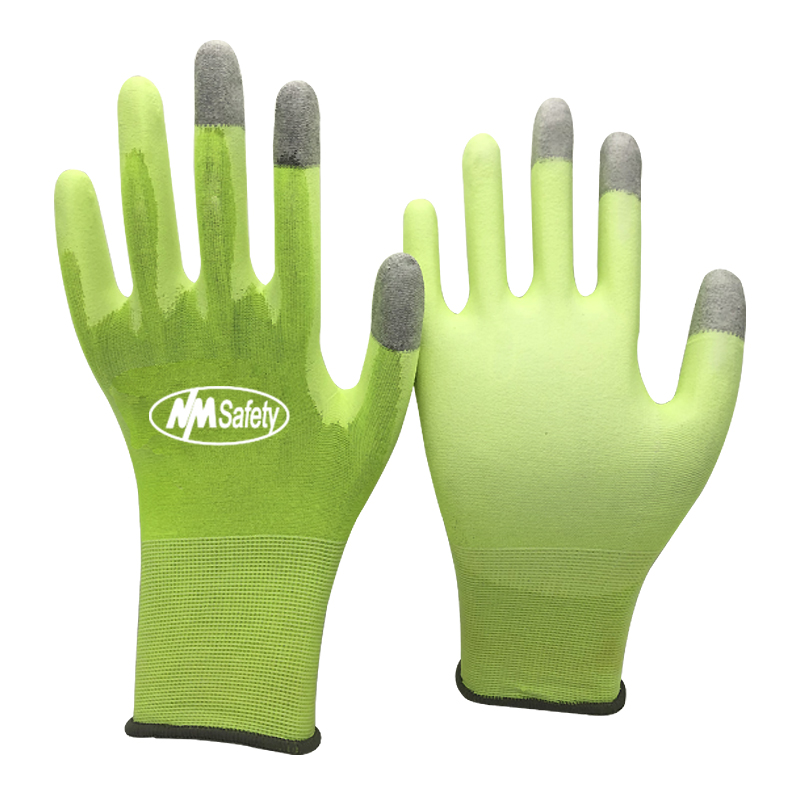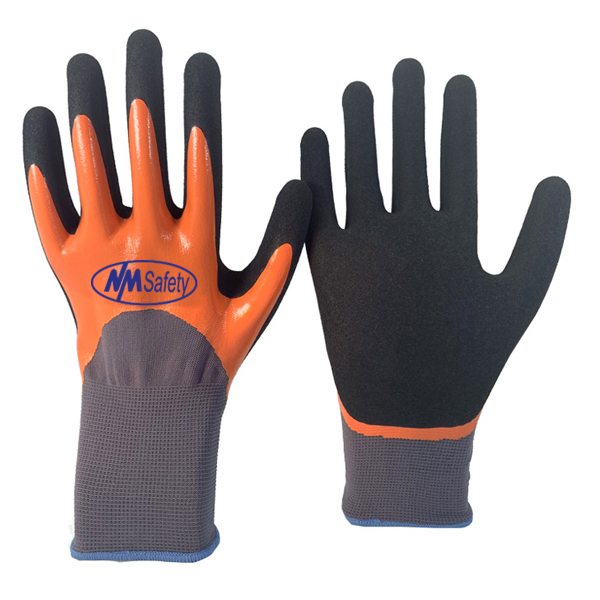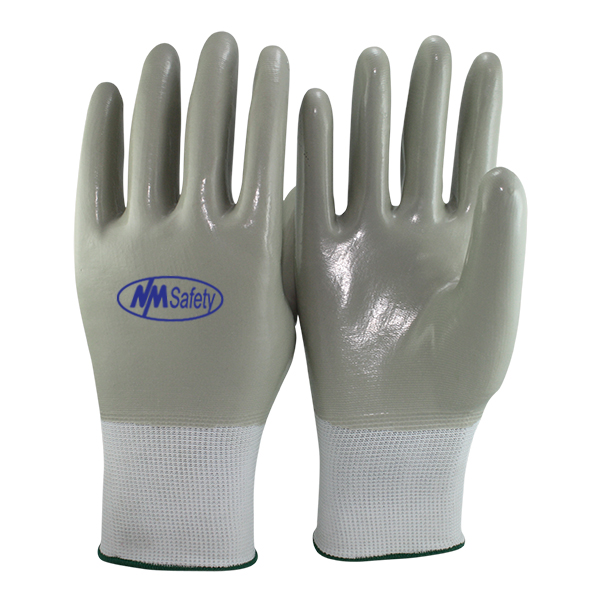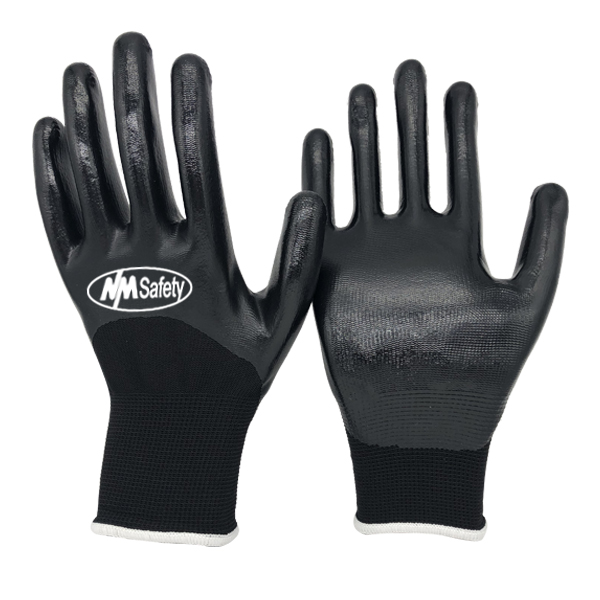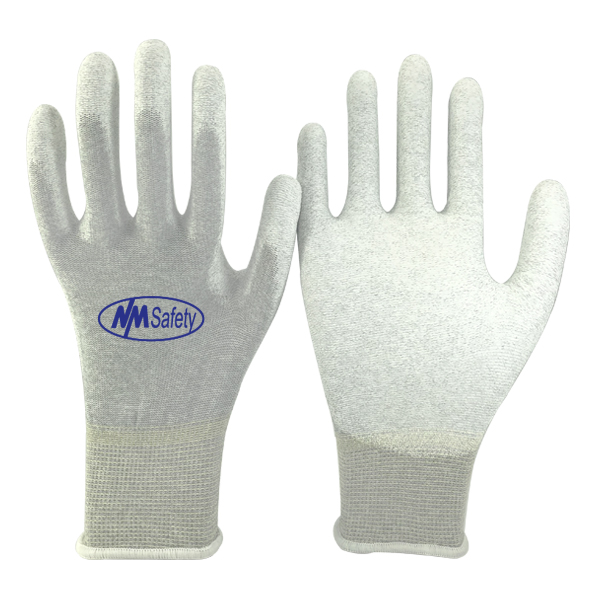Understanding gauges terminology: You've probably noticed that most descriptions of machine-knit work gloves specify the glove's gauge. The number of stitches in each inch of material determines the gauge of a glove. Gloves with gauges ranging from 7 to 18 are commonly available from manufacturers. But what does this entail for your employees?
You would believe that lower = lighter and higher equals heavier, however, this is not the case! Gloves with a lower gauge are heavier, while gloves with a greater gauge are lighter.
Lower-gauge gloves are made of thicker yarn and have fewer stitches per inch. This makes the knit looser, with more space between the stitches.
A finer, thinner yarn is used in a higher-gauge glove, and there are more stitches knitted each inch.
This results in a tighter weave. Any space between stitches is imperceptible to the naked eye at the higher end.
Lower Gauge: Lower gauge gloves are generally rougher and have less dexterity. It won't be as difficult to move your hand as it would be in a thicker leather glove, but picking up small objects like nuts or bolts may be tough while wearing a lower-gauge glove.
Higher Gauge: Higher gauges are softer and have more dexterity. As a result, wearing a higher-gauge glove will be more comfortable, and doing occupations that demand fine motor skills will be easier.
Considerations: It's important to remember that gauge isn't everything. There is a range of glove add-ons available to aid with a variety of worker protection concerns. Comfort, cut, abrasion, liquid, and puncture resistance are all determined by the yarn chosen and any glove coatings. Keep an eye on the gauge when it comes to the glove's flexibility, though!
Features of Guage-18: Machine-knitted gauge 18
Only a few manufacturers offer the current lightweight protection standard.
Threads that are extremely fine
The numbering is really low (100 to 200 denier)
Gloves that are exceptionally light
Gloves that are soft and flexible
Braiding is quite challenging.
Touch Screen Gloves: How Do They Work? Touchscreen technology has advanced significantly in recent years, and gloves are rapidly evolving to match the needs of users. Our natural hands use our body's natural energy to trigger off electronic sensors, guiding the information we want to see on electronic devices. What happens, though, when your hands are coated in hand protection? You're not going to set off any signals unless the glove has capacitive touch functionality. Because most gloves are made of non-conductive materials, they won't operate with touch displays.
A conductive coating or conductive threads are two options for overcoming touchscreen incompatibility. Fingertips can be coated with conductive coatings, or the gloves can be knitted with conductive threads. Many of our cut-resistant gloves feature threaded material that makes swiping any electrical device simple. PU-coated gloves are a good option if you’re facing this problem.
Gloves with a PU coating: PU-coated gloves, also known as polyurethane-coated gloves, are a type of PU Flex Glove developed for precision, dexterity, and sensitivity. They're made of polyurethane foam with a nylon liner, which provides a comfortable and lightweight barrier for your hands from abrasion and chemicals. The PU-coated gloves are low-cost, long-lasting, and high-quality. Optics, aerospace engineering, electronics, telecommunications, and the petrochemical industries all utilize antistatic gloves. They've been designed specifically for working with delicate films, electronic components, circuit boards, and precision equipment.
Fingertips Coated Gloves: The ultimate goal of a PU-coated glove is to eliminate static electricity in a specific work environment, such as when working with sensitive electronics or on a gas line. On the other hand, several PU-coated gloves manufacturers specify if a glove is suitable for handling or assembly. Handling gloves protect the operator's hands from contamination and injury, whereas assembly gloves protect sensitive objects from contamination and damage. For most laboratories, cleanrooms, biotech, and electronic work, coated fingertip gloves should be considered essential safety equipment. Fingertips Coated gloves must, however, be used in conjunction with a grounding wrist strap to ensure the lowest potential risk of electrostatic discharge. That's why after minor changing in manufacturing these gloves can be used for touch screens like mobile phones and tablets.
Is it safe to use polyurethane gloves?: Polyurethane is a typical form of polymeric polymer with a wide range of applications, including use as an adhesive and a material for gloves and other garments. Polyurethane can be made into a variety of shapes by adding catalysts, blowing agents, and flame retardants to the chemical makeup.
Material of these Gloves: When opposed to disposable gloves, the fabric allows you to re-use gloves, which can save you a lot of money. It should be noted that different glove materials can be hazardous when used with specific chemicals; for example, nitrile gloves are not ideal for use with ketones or aromatic solvents, while being robust and free of latex allergies. As a result, depending on your work environment, you may need to use two or more types of gloves to give the optimum protection for both people and products.
Several manufacturers also give finger cots to their cleanroom employees. These teeny-tiny gloves are available in a variety of fabrics and offer greater dexterity than full-sized gloves.
Finger cots, on the other hand, should only be utilized in settings where no hand tools will be employed.
Conclusion: 18 Gauge Touch Screen PU Palm Coated Gloves are suitable for any electronic assembly task involving skin contacts, such as handling touch screens, microelectronics, PC and laptop repair, or assembly where ESD is a concern. Touching an electrostatic discharge (ESD) sensitive device, even if properly grounded, can result in a destructive discharge. Increasing the electrical channel's contact resistance is one way to slow down and regulate the discharge. Wearing anti-static gloves is a great way to do this. NMsafety offers the most affordable Touch Screen PU Palm Coated Gloves on the market.





